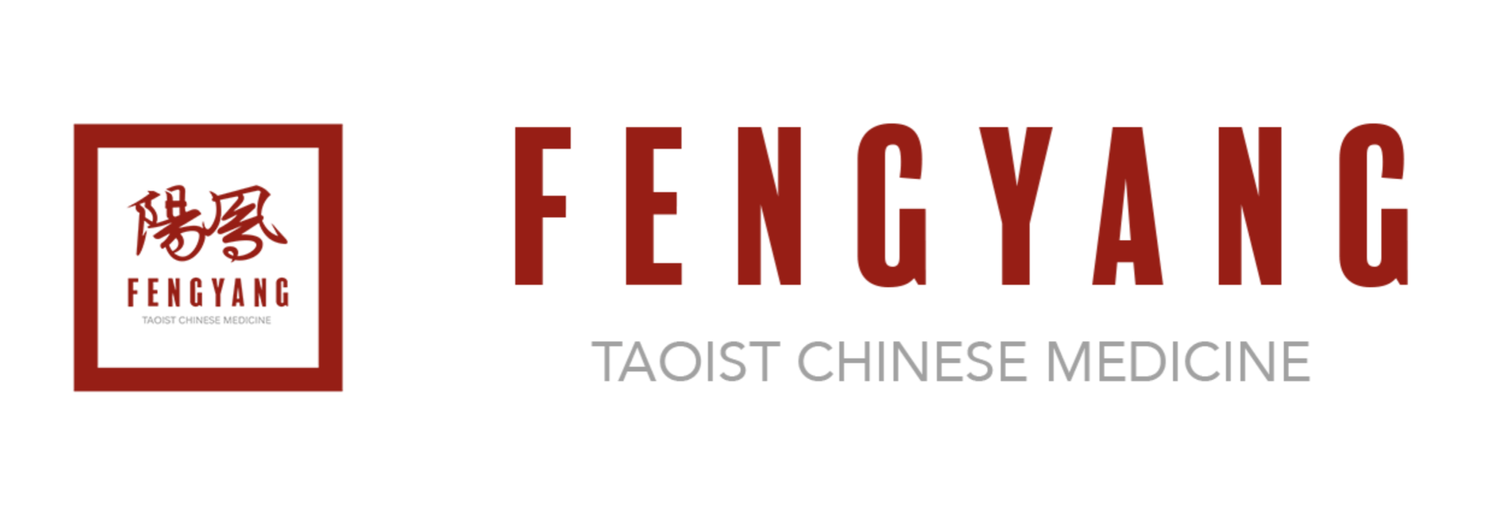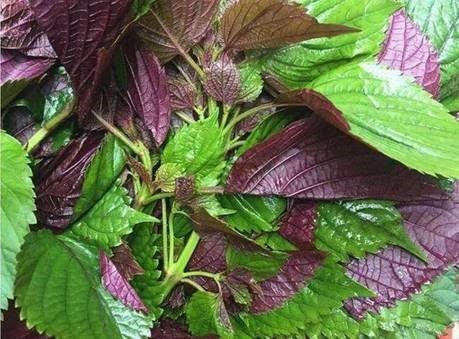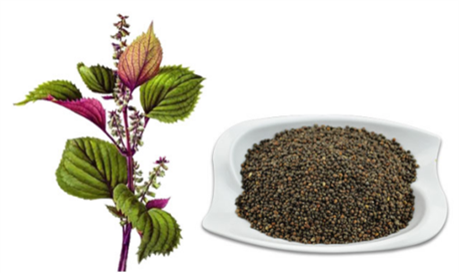Learn About Chinese Herbs -Zi Su (Perilla)-
Zi Su (Perilla)
This product is a commonly used Chinese medicine, and in the book "Famous Doctors" is listed as a Chinese product. Originally named "Sue". Most of the current commodities are named medicinally according to the different parts of the herb it uses.
Source: Perilla frutescens (L.), an annual herb of the family Lamiaceae) Britt. var. acuta (Thunb) A dried whole plant of Kudo (called perilla). Remove the old stems (called perilla stems) from the shoots and leaves. Picked leaves (called perilla leaves). Ripe fruit (called perilla seed). Mostly cultivated.
Plant Status: Annual herb with a specific aroma. The stem is square, erect, 30~100cm high, purple-green. Multi-branched. The leaves are opposite, the stalk is 2.5~7.5cm long, the leaf blade is oval, 4~12cm long, 2.5~10cm wide, the apex is pointed, the leaf margin is bluntly serrate, purple or green on both sides, sparsely pubescent on both sides, and there are fine oil spots on the back. Inflorescences apical or axillary, calyx bell-shaped, sepals enlarged when fruit ripe, corolla tubular, upper bilabial, pale red, small nuts grey-brown or brown, ovate.
Origin: mainly produced in Jiangsu, Zhejiang, Hebei, Hubei, Henan and other places, many other places also cultivate.
Character identification: perilla stem slightly square cylindrical, quadrangular, dark purple, showing longitudinal groove, with obvious nodes, nodes on branches or leaves, 30~80cm long, about 3~10mm in diameter, white hairy on young stems. The leaves are purple-green, as thin as paper and more broken. At the top there is a calyx (called Su Zi Bi and is also used for medicinal purposes). The fruit is grey-brown, ovate, and about 1 mm in diameter. The old stem is hard, the young stem is crunchy, and the cross-section has a white pith core. The old stem is slightly airy and light-flavored. The young stems and leaves are fragrant and slightly bitter. The stems and branches are more tender, purple-green, and have most leaves.
Main ingredients: containing volatile oil, mainly of perilla oil.
Pharmacological effects: (1) sweating and antipyretic; (2) diuresis; (3) Strengthen the stomach, internal administration can promote gastric juice secretion, enhance gastrointestinal peristalsis; (4) Expectorant, can reduce bronchial secretions.
Preparation: cut and use.
Taste: spicy and warm.
Meridian Attribution: into the lungs, spleen meridians.
Function: Regulate qi and release chest, relieve depression and ease the fetus.
Indications: chest tightness, vomiting, stagnation, fetal restlessness.
Clinical application
(1) It is mainly used for the treatment of external wind chill and chest tightness, nausea and vomiting (equivalent to gastrointestinal cold). The effect of Zi Su Ye sweating is much weaker than that of Ma Huang and Gui Zhi, and the effect alone is not large, and so it is used with Ging Jie, Fang Feng, or Sheng Jiang to help increase sweating. But its specialties are both the ability to regulate qi (adjust gastrointestinal function and help digestion) and anti-nausea (better with Zhi Ke). Those with frequent nausea and vomiting or diarrhea can use 4.5g of this product plus 3g of Chuan Lian, cooked in water. As for the milder colds of the elderly and children, when Ma Huang and Gui Zhi may cause too much sweating, they can be replaced by Zi Su Ye, such as in Xiang Su Yin.
(2) It is used for the treatment of pregnancy vomiting, chest tightness and nausea. The Lao Su Geng has a good effect (4.5~9g). With Chen Pi and Sha Ren, it can enhance the effect of strengthening the stomach.
(3) For solving fish and crab poisoning, it is necessary to use 30~60g.
In addition, scrotal eczema can be treated topically. The method is to fry 30g of water with Su leaf, soak the affected area after warming, and then rub it in the affected area with raw oil.
Dosage: generally 6~9g.
Prescription example:
Xiang Su Yin ("Bureau"): 6g of Xiang Fu, 6g of Zi Su Ye, 3g of Chen Pi, 3g of Gan Cao, 3g of Sheng Jiang, 9g of Hong Zao, cooked in water.
[attached]
· Perilla stem: commonly known as Su Geng, is the dry stem and branch of perilla, specializing in smoothing qi and protecting the fetus (stomach strengthening, pregnancy nausea and vomiting). Slice, raw. The effect is slightly the same as that of Zi Su, which is biased towards rational qi and tranquility.
· Zi Su Ye: raw use, effect opens external and muscle relief, dispel wind and cold.
· Su Zi: There are two kinds (black Suzi) and white Suzi. In the north, black Su Zi are mostly used, and most of them are wild products. Stir-fry or raw, the effect is to drive phlegm and relieve depression, and calm the breath for asthma.
Case study: Kidney stone
Patient: male, 64 years old
Date of first visit: Aug. 3rd, 2016
Chief complaints: Patient experienced abdominal pain, nausea, vomiting.
Emergency room CT results: Kidney stone, 0.5cm in diameter.
TCM treatment:
1. Jin Qian Cao 60g, boil in 2 cups of water until the liquid is reduced to 1 cup. Drink the liquid. Repeat once a day for 7 days.
2. Cupping and Tuina.
First follow-up date: Aug. 10th, 2016. Patient reported the abdominal pain has lessened. An appointment has been made for him to have surgery on Aug. 25th.
TCM treatment:
1. Ask the patient to practice abdominal breathing method for 1 hour per day.
2. Tuina and Cupping.
3. Herbal medicines to make tea.
Herbal Medicine Formula: Guang Jin Qian Cao 30g, Jin Qian Cao 10g, Mu Tong 10g, Tong Cao 5g, Mu Xiang 10g, Che Qian Zi 10g, Zhu Ling 10g, Tu Fu Ling 20g, Yun Xiang 5g. First boil all the herbs in 4 cups of water until the liquid is reduced to 2 cups. Drain the liquid to drink. Boil the remnant in 3 cups of water to make another 2 cups of tea. Repeat once a day for 7 days.
Second follow-up date: Aug. 17th, 2016. Patient found the kidney stone came out during urination at 1am this morning. He cancelled his appointment for surgery.



